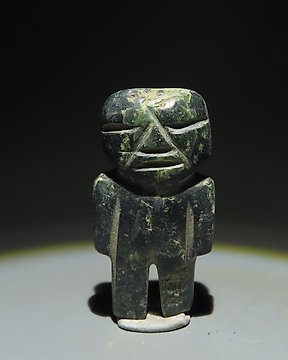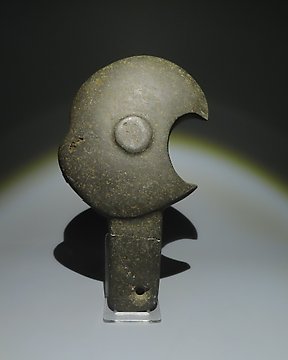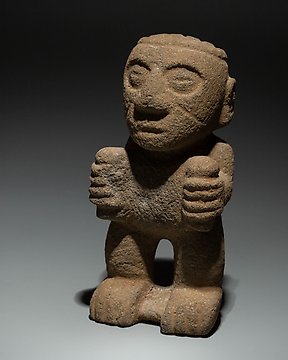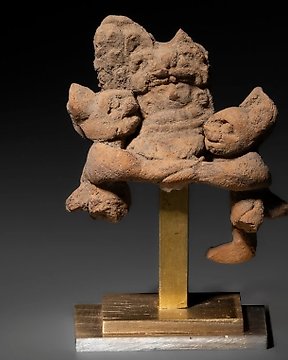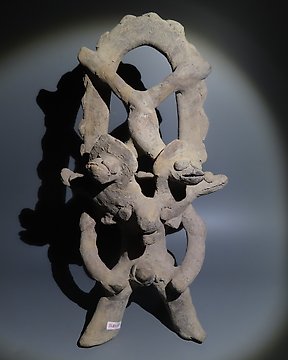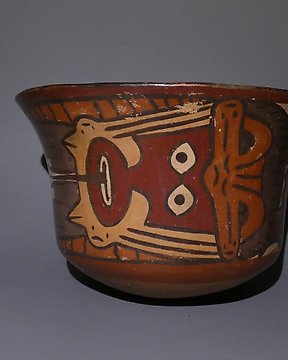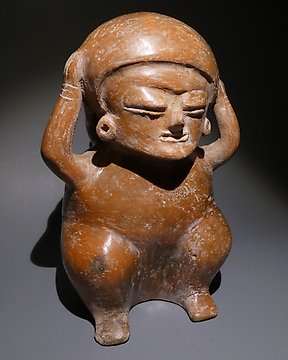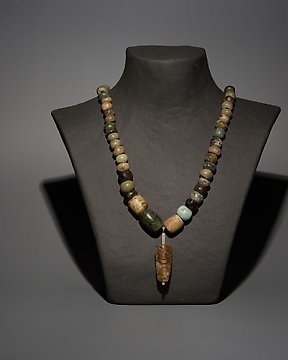
墨西哥米斯特卡 玉 項鍊。西元 1200-1400 年。 46 公分長。西班牙出口許可證。
Catawiki正在不斷更新其技術。 您目前正在使用過時的瀏覽器。 為了優化您的瀏覽體驗,請更新您的瀏覽器。
您可以使用以下切換按鈕設置Cookie偏好設定。您可以隨時更新您的偏好,撤銷同意,並在我們的Cookie政策中查看我們和我們的合作夥伴使用的Cookie類型詳情。
編號 84325049
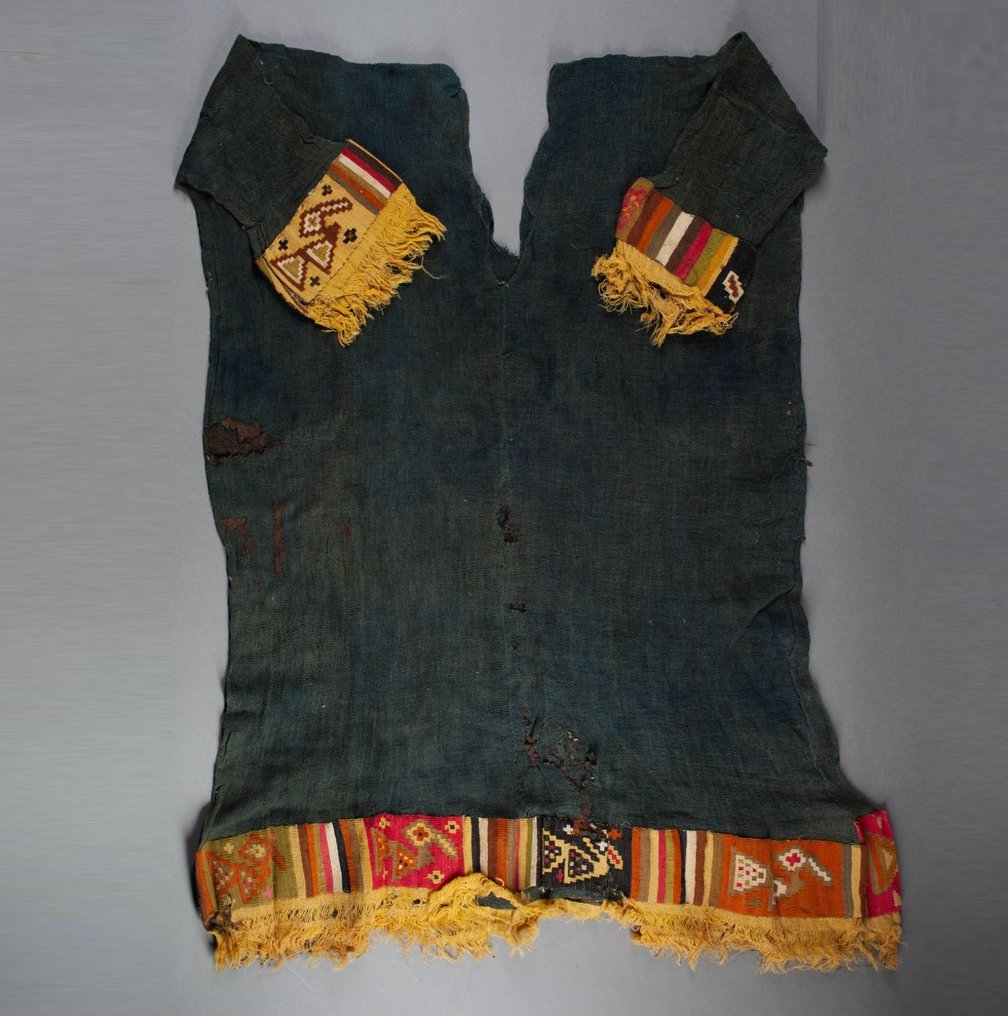
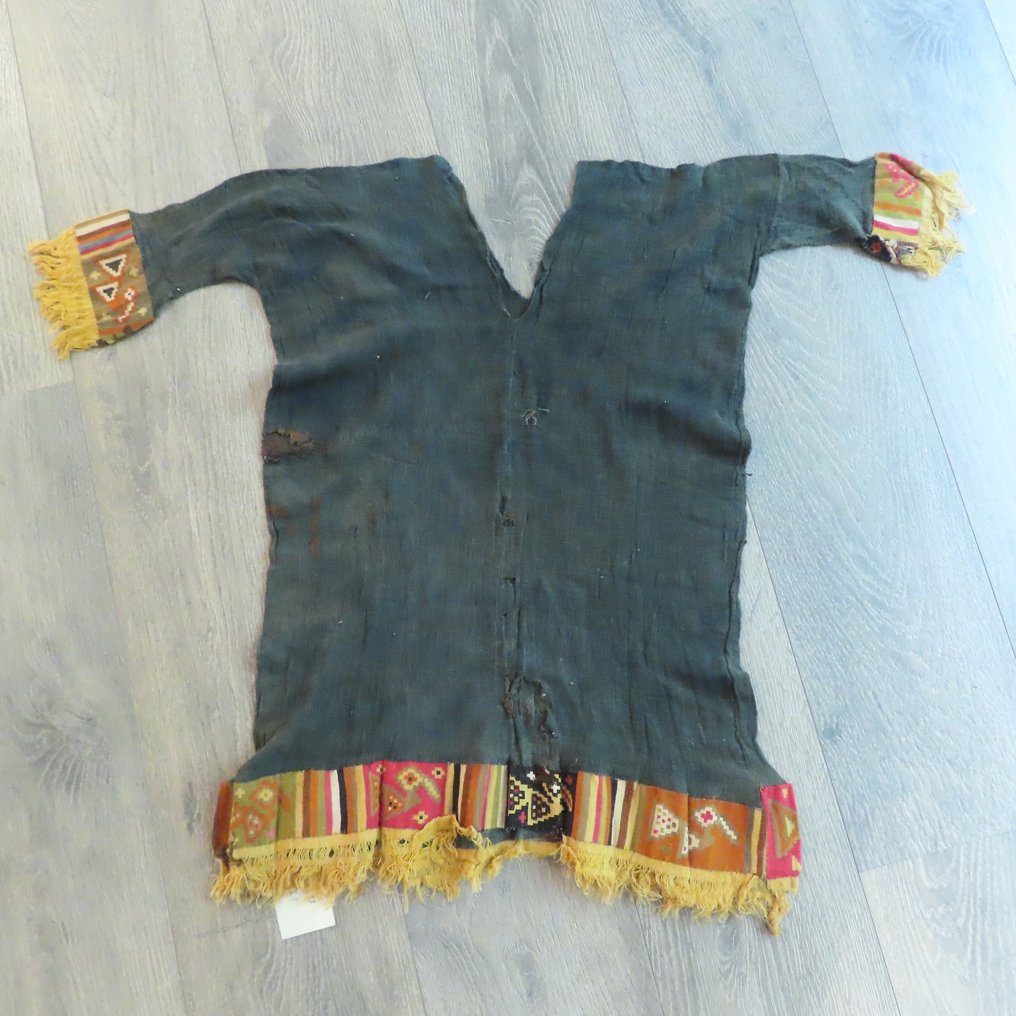
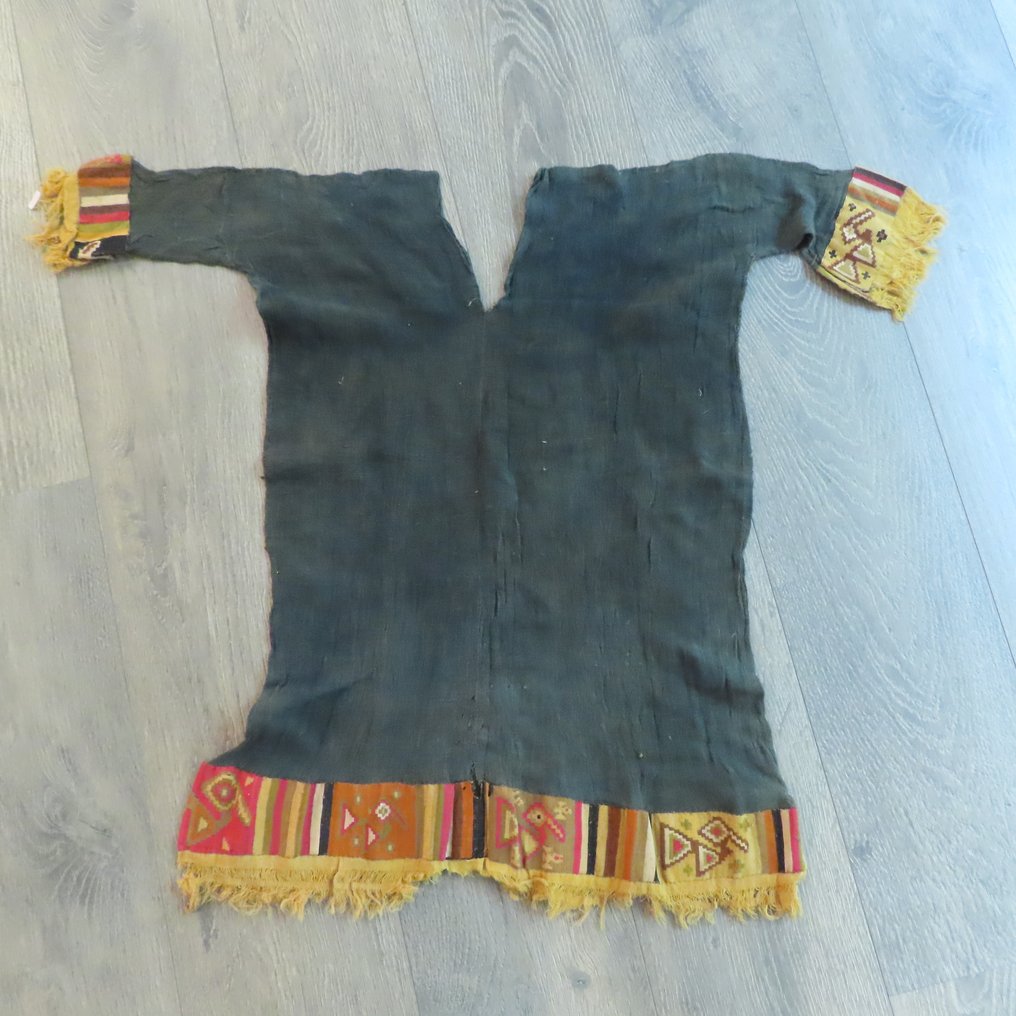
Textile Poncho dress
CULTURE: Nazca, Peru
PERIOD: c. 200 - 600 AD
MATERIAL: Textile.
DIMENSIONS: Height 74 cm. 46 cm length.
PROVENANCE: Private collection, Paris France. 1970. With spanish import / export license.
CONDITION: Good condition. Complet
DESCRIPTION:
The Nazca culture developed in the valleys and coast of southern Peru, including Pisco, Ica, Cañete, Acarí and, especially, the Nazca Valley itself. This coastal desert region is carved by narrow fertile valleys.
Artistically, the Nazca are most famous for their geoglyphs, enormous drawings traced out on the bare ground of the pampa north of the settlement of Cawachi. They outline anthropomorphic, zoomorphic and phytomorphic shapes, as well as straight lines sev0eral kilometres long, all of them amazingly precise. The actual significance of the Nazca figures is not known, but most of them are so large they are best appreciated from the air. According to the main hypothesis, the place served as an astronomical observatory; another holds that it was a major ceremonial centre.
Their pottery is renowned for the quality of their vases with their fine, complexly painted imagery, and especially for the polychrome colouring of the motifs, some of which are done in six or seven different colours. The most typical type of Nazca ceramic vessel was the bridge-handled vase with two spouts. These were often painted with domestic images such as flowers, fruit, birds, animals and insects, though some bear mythological figures or individuals with both human and animal attributes.
The Nazca buried their dead in funerary bundles composed of several layers of wrapping and clothing, inside of which they deposited pottery vessels and other objects as grave goods. Higher ranking individuals had more complex bundles, which in some cases were made up of dozens of layers of textile. Severed human heads have been found among the grave goods in many graves, indicating the importance of human sacrifice in this society. This practice was apparently associated with fertility rites.
BIBLIOGRAPHY:
- TOWNSEND, R. Indian Art of the Americas at the Art Institute of Chicago. Yale University Press, New Haven and London. 2016.
Notes:
The seller guarantees that he acquired this piece according to all national and international laws related to the ownership of cultural property. Provenance statement seen by Catawiki.
The seller will take care that any necessary permits, like an export license will be arranged, he will inform the buyer about the status of it if this takes more than a few days.
The piece includes authenticity certificate.
The piece includes Spanish Export License.
Textile Poncho dress
CULTURE: Nazca, Peru
PERIOD: c. 200 - 600 AD
MATERIAL: Textile.
DIMENSIONS: Height 74 cm. 46 cm length.
PROVENANCE: Private collection, Paris France. 1970. With spanish import / export license.
CONDITION: Good condition. Complet
DESCRIPTION:
The Nazca culture developed in the valleys and coast of southern Peru, including Pisco, Ica, Cañete, Acarí and, especially, the Nazca Valley itself. This coastal desert region is carved by narrow fertile valleys.
Artistically, the Nazca are most famous for their geoglyphs, enormous drawings traced out on the bare ground of the pampa north of the settlement of Cawachi. They outline anthropomorphic, zoomorphic and phytomorphic shapes, as well as straight lines sev0eral kilometres long, all of them amazingly precise. The actual significance of the Nazca figures is not known, but most of them are so large they are best appreciated from the air. According to the main hypothesis, the place served as an astronomical observatory; another holds that it was a major ceremonial centre.
Their pottery is renowned for the quality of their vases with their fine, complexly painted imagery, and especially for the polychrome colouring of the motifs, some of which are done in six or seven different colours. The most typical type of Nazca ceramic vessel was the bridge-handled vase with two spouts. These were often painted with domestic images such as flowers, fruit, birds, animals and insects, though some bear mythological figures or individuals with both human and animal attributes.
The Nazca buried their dead in funerary bundles composed of several layers of wrapping and clothing, inside of which they deposited pottery vessels and other objects as grave goods. Higher ranking individuals had more complex bundles, which in some cases were made up of dozens of layers of textile. Severed human heads have been found among the grave goods in many graves, indicating the importance of human sacrifice in this society. This practice was apparently associated with fertility rites.
BIBLIOGRAPHY:
- TOWNSEND, R. Indian Art of the Americas at the Art Institute of Chicago. Yale University Press, New Haven and London. 2016.
Notes:
The seller guarantees that he acquired this piece according to all national and international laws related to the ownership of cultural property. Provenance statement seen by Catawiki.
The seller will take care that any necessary permits, like an export license will be arranged, he will inform the buyer about the status of it if this takes more than a few days.
The piece includes authenticity certificate.
The piece includes Spanish Export License.
